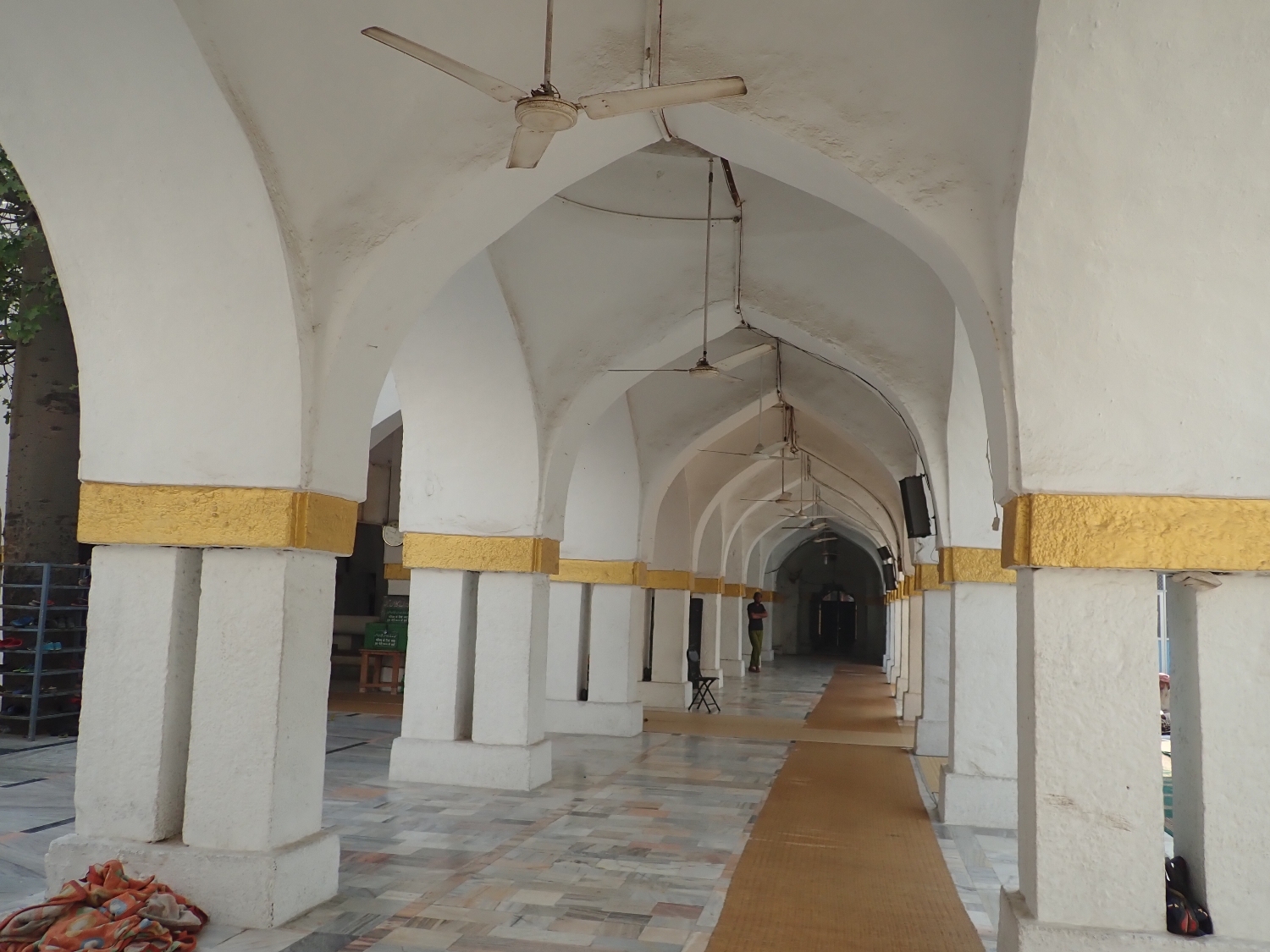
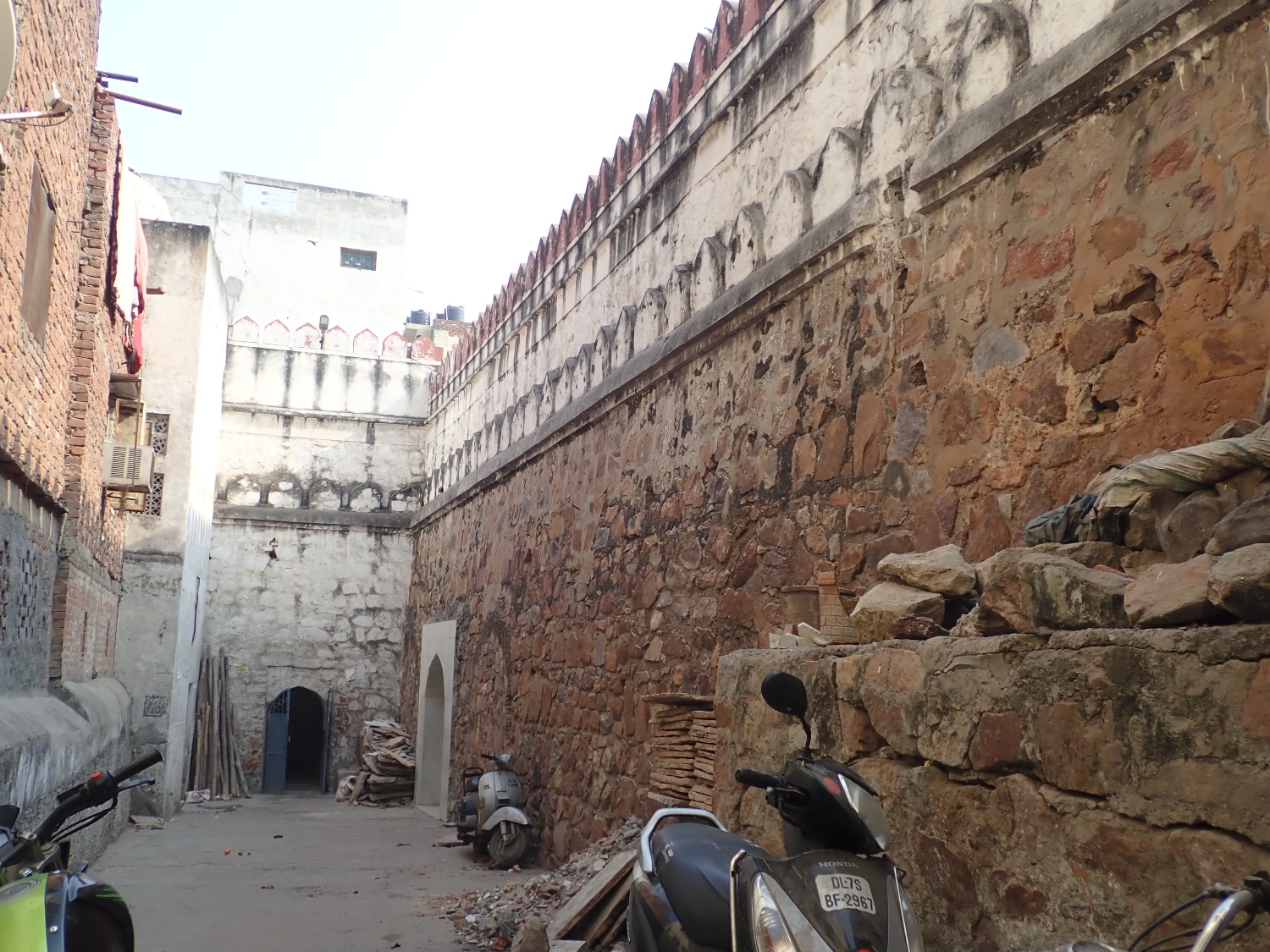
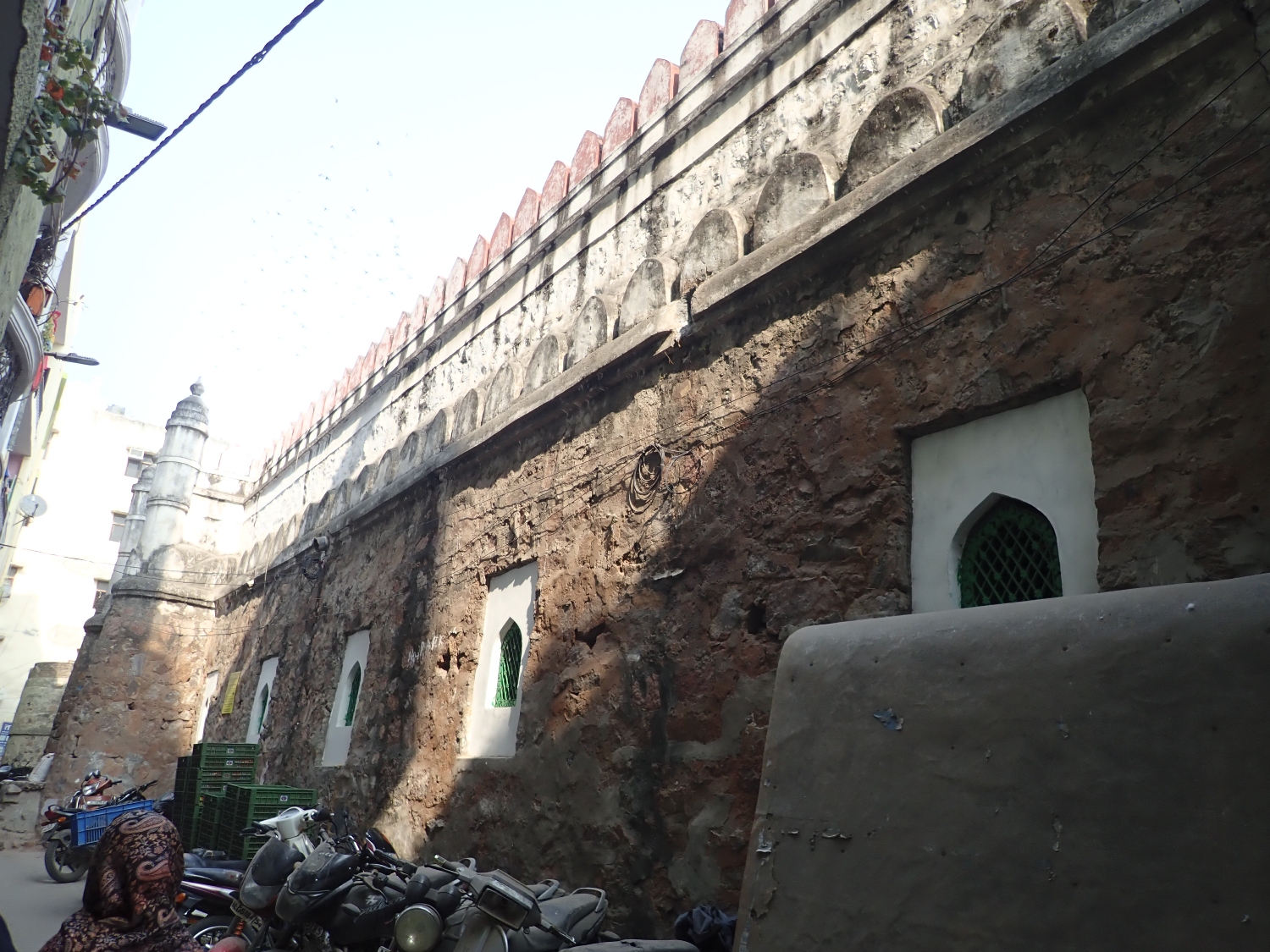
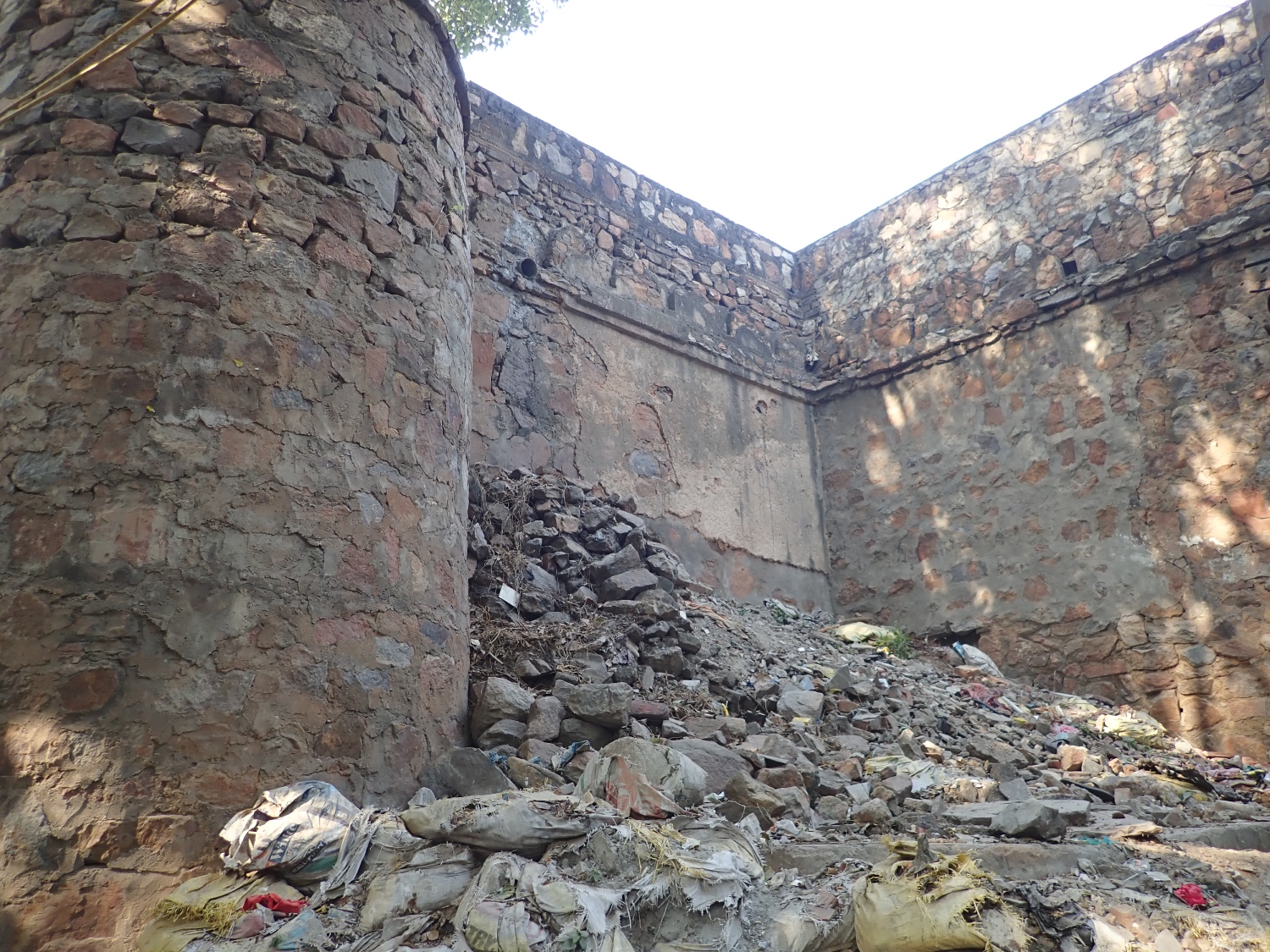
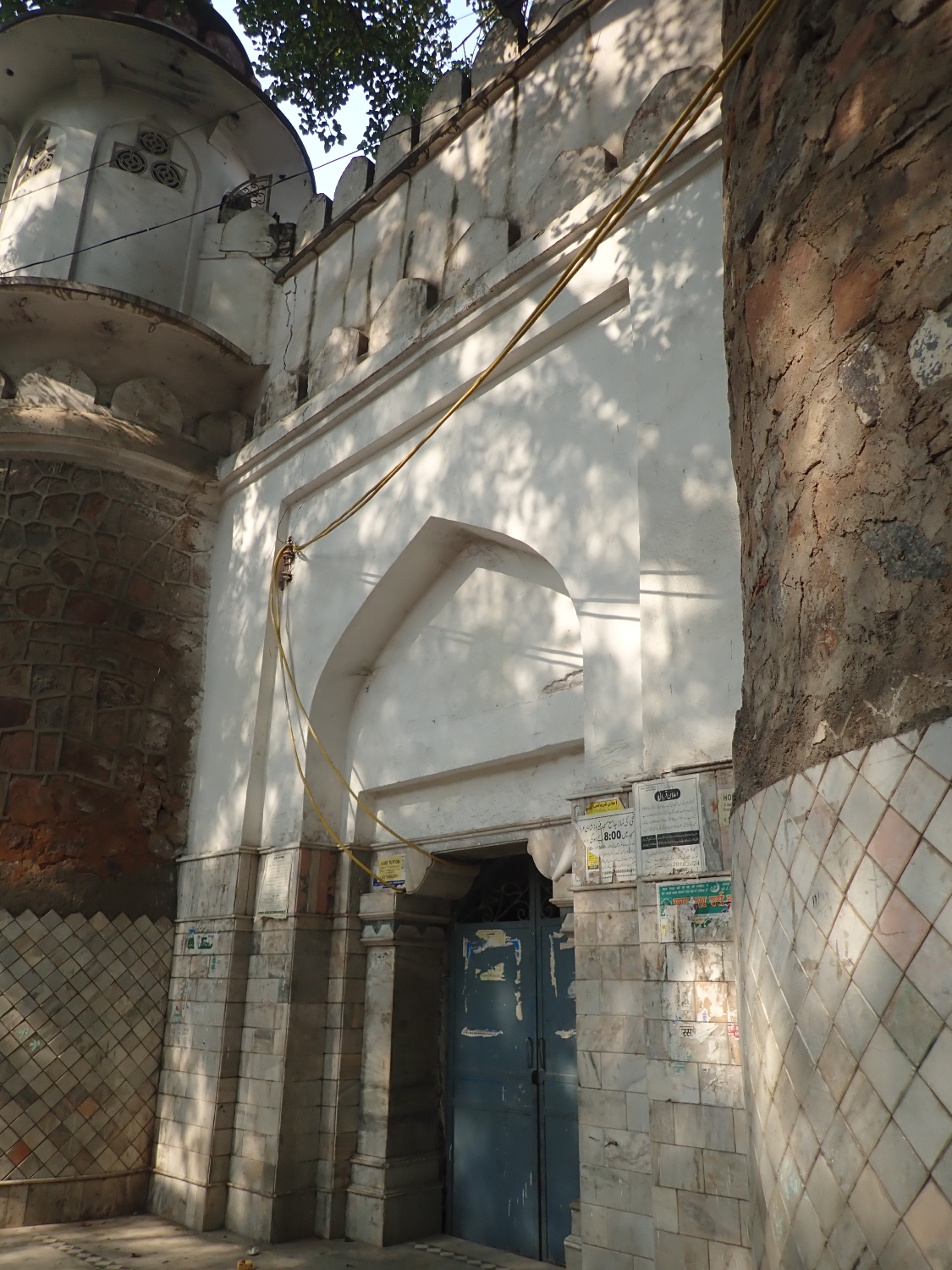
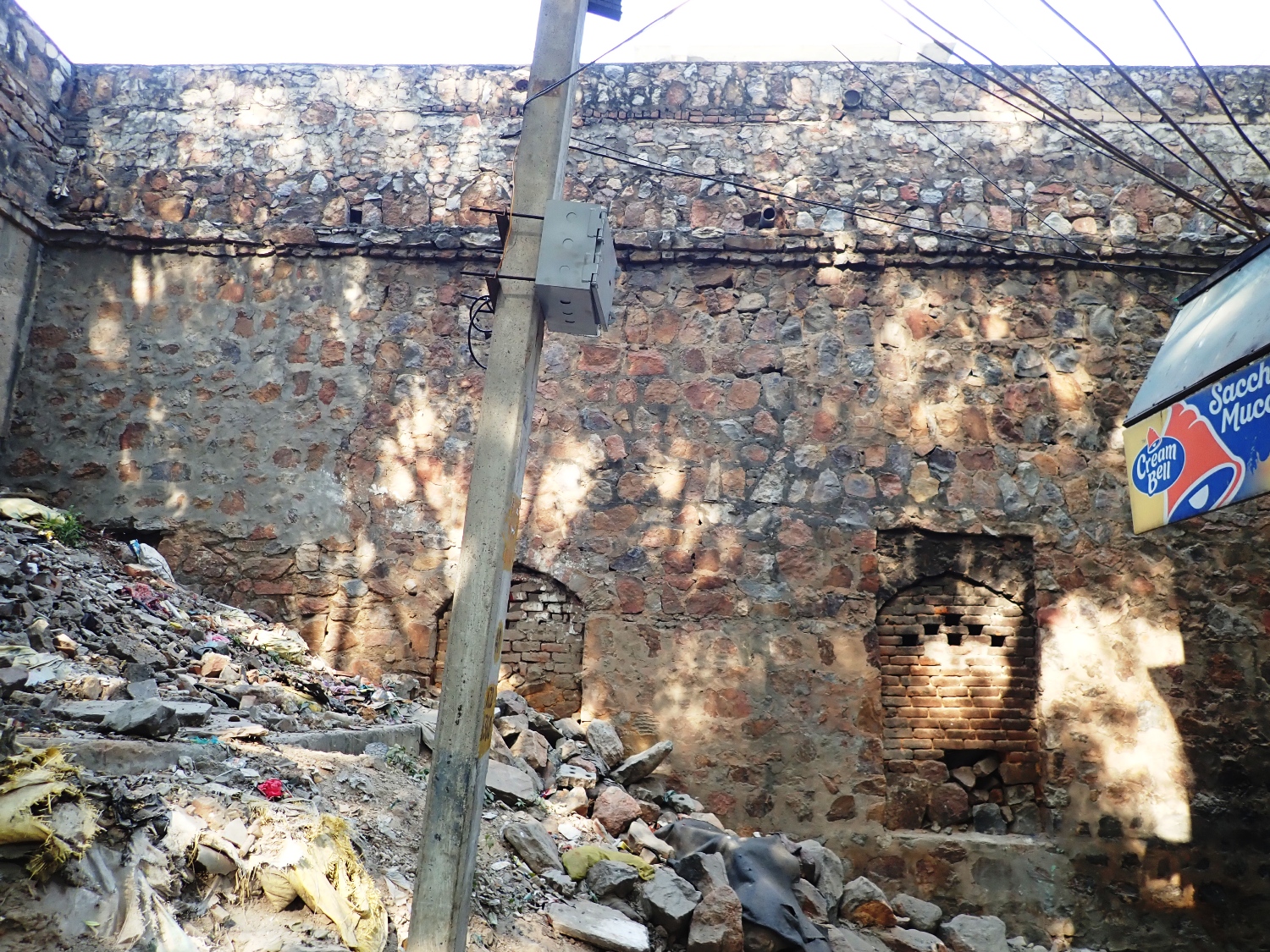
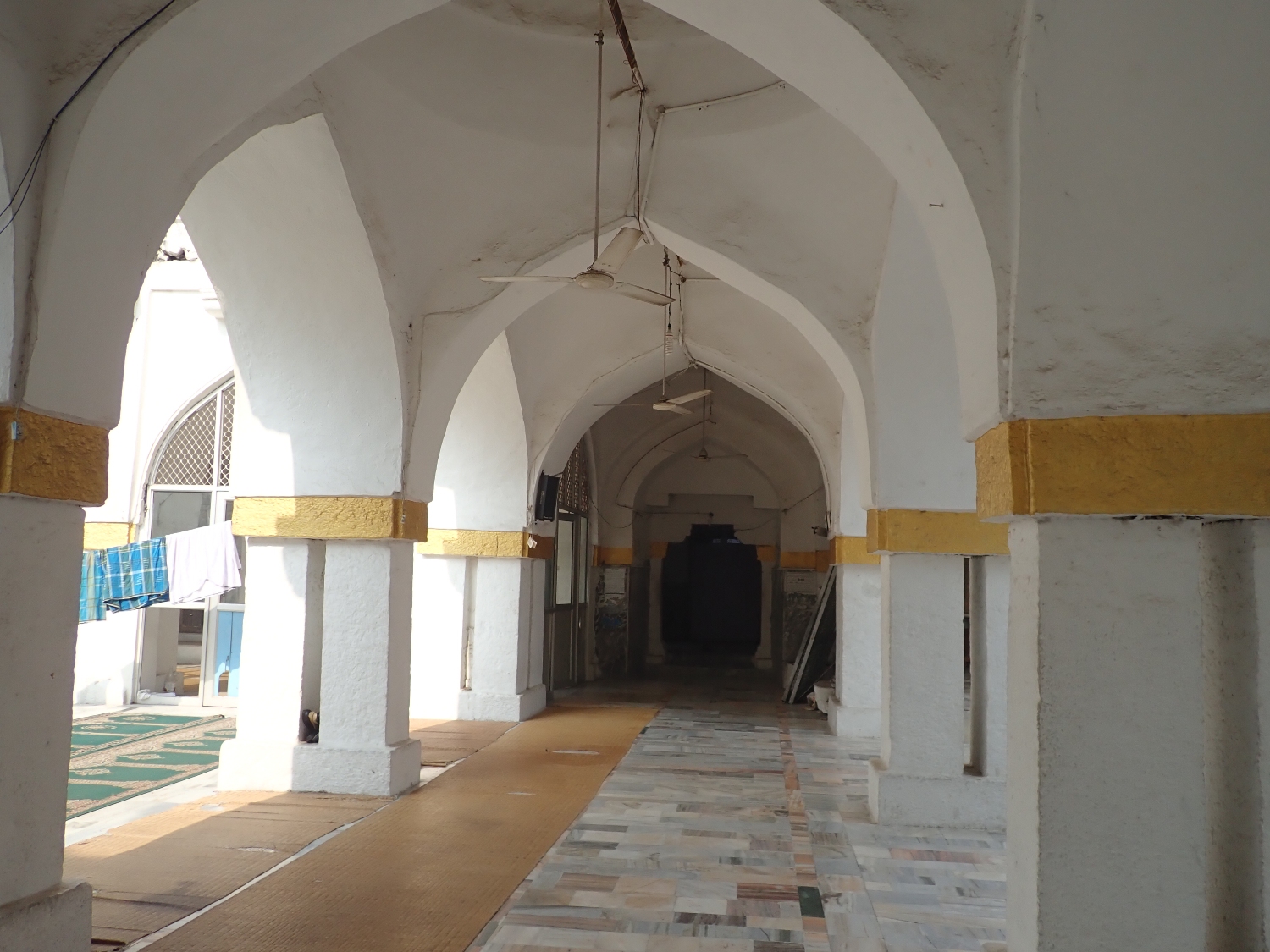
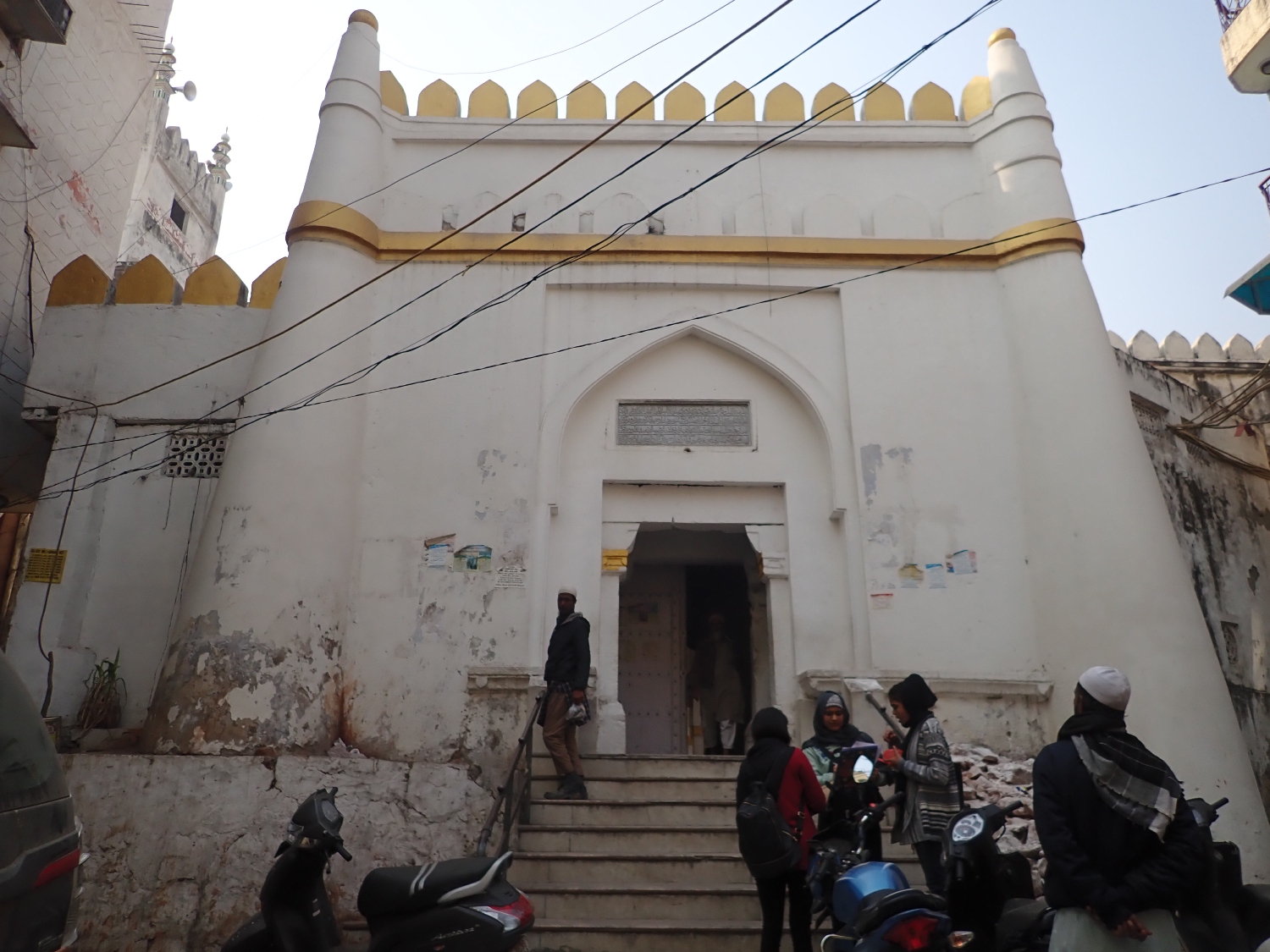
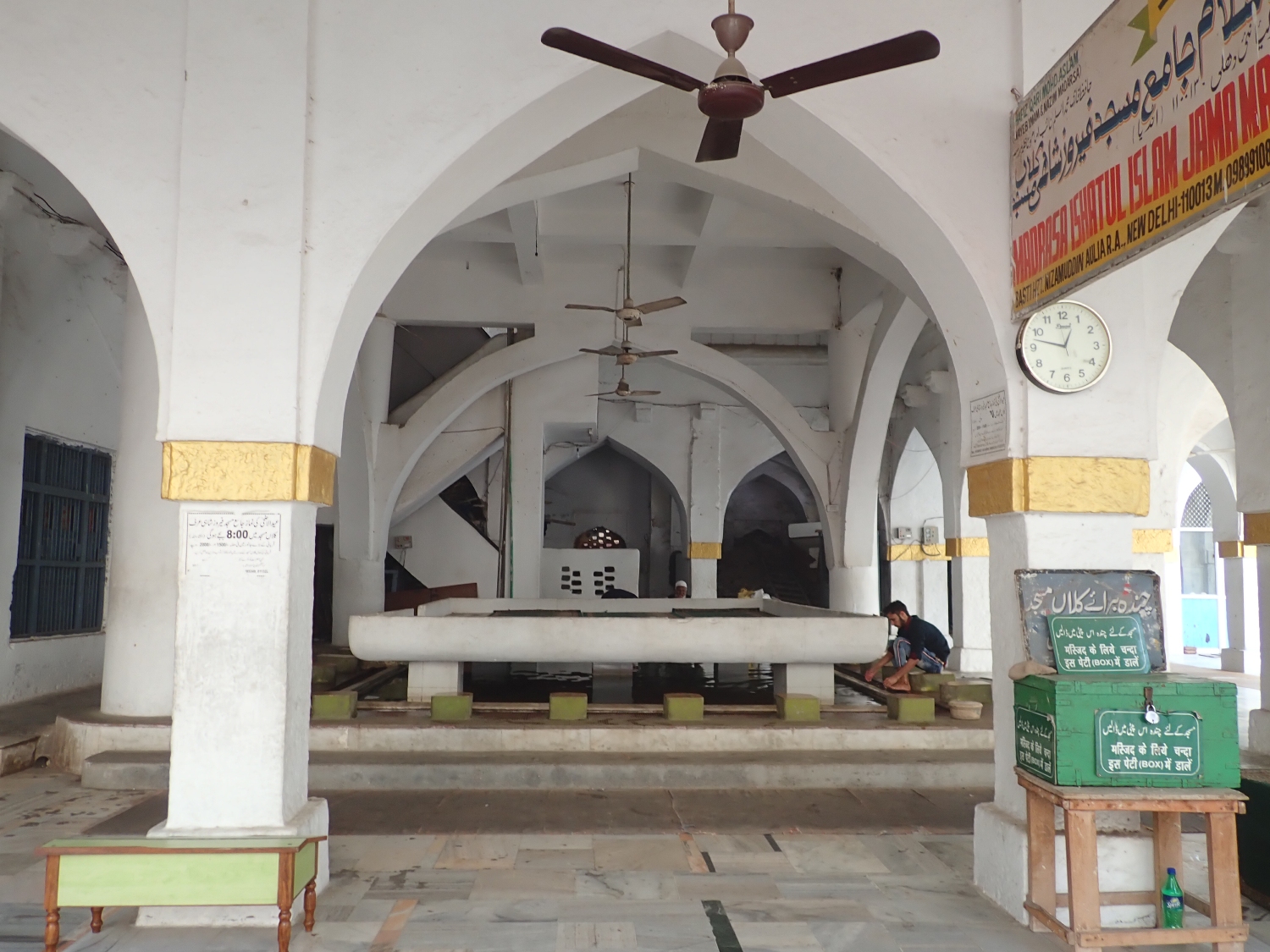
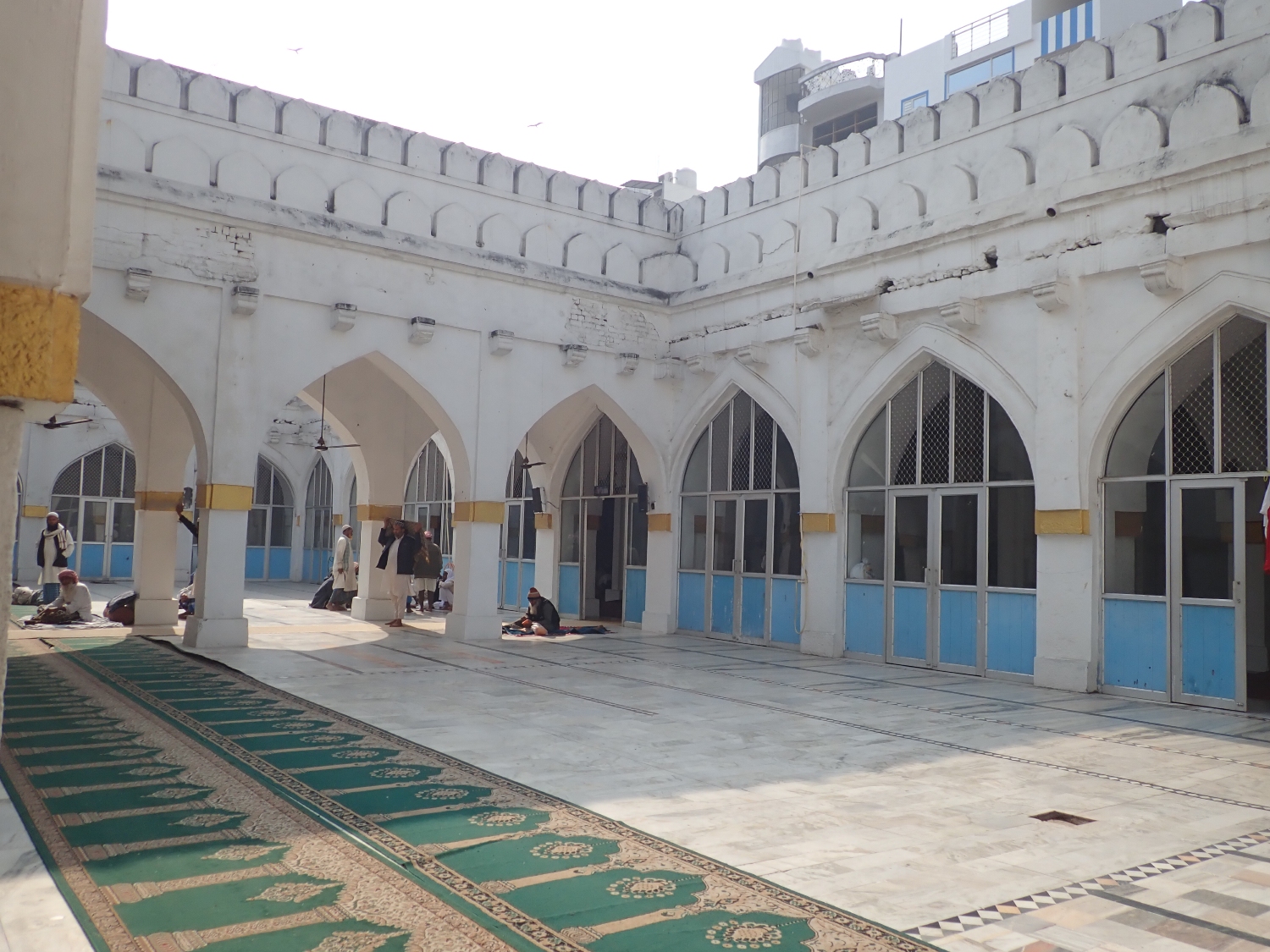
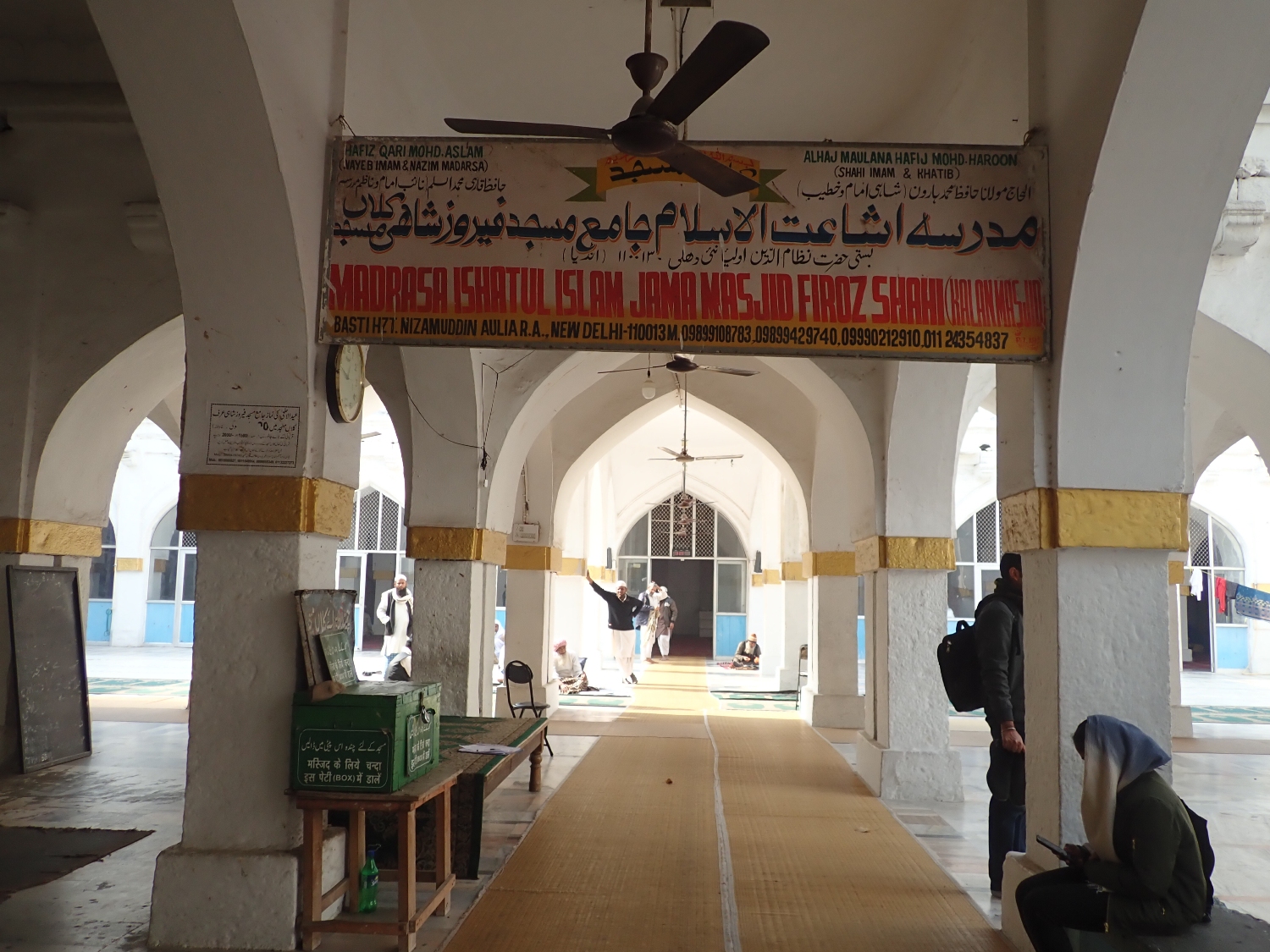
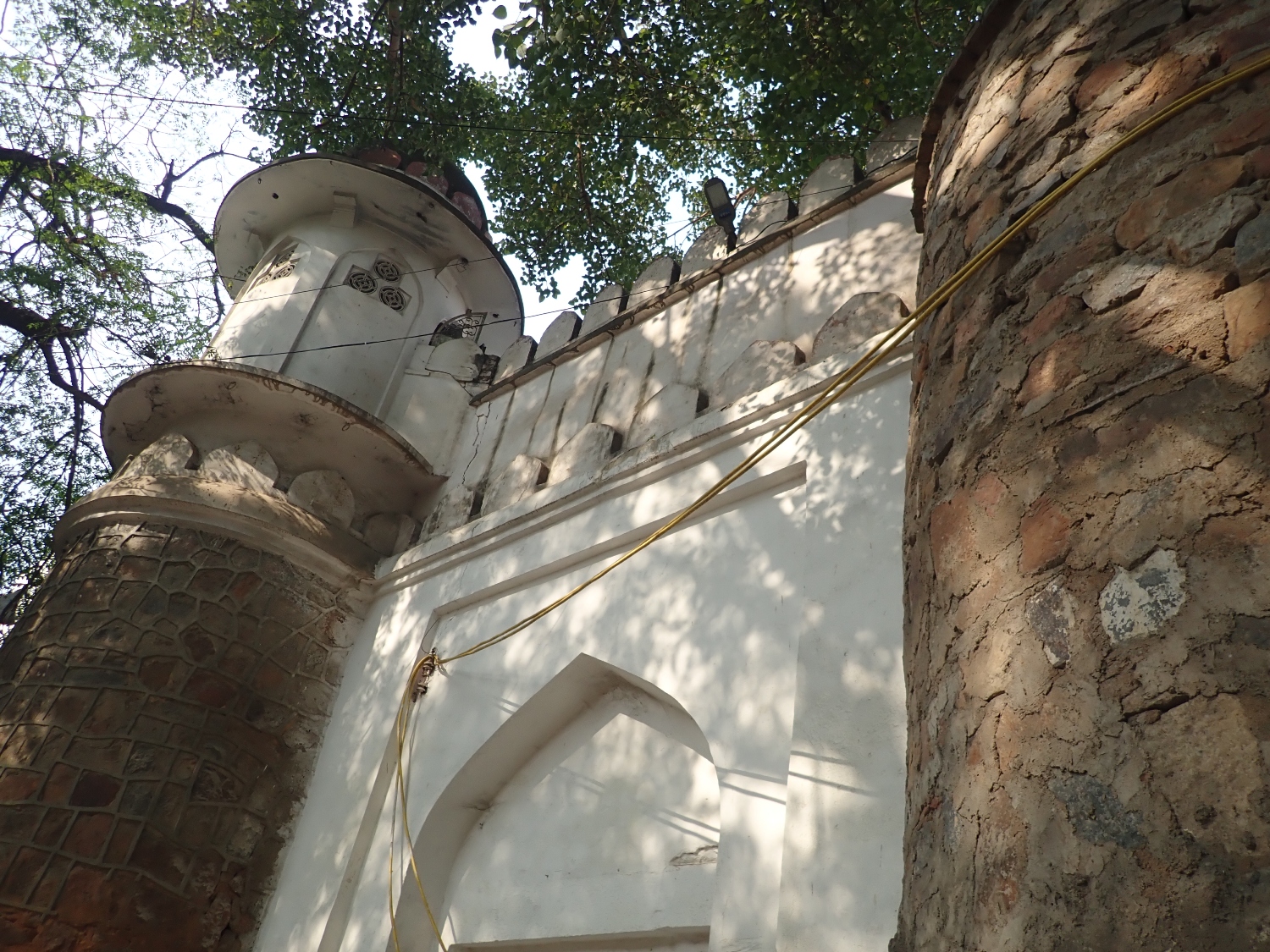
Historical Background : Kali Masjid was constructed in 1370-1371 AD by Khan-i-Jahan Junan Shah, the Wazir (minister) of Sultan Firoz Shah Tughlaq. Khan-i-Jahan, who converted to Islam in 1323, designed the mosque to reflect the architectural and cultural aesthetics of the Indo-Persian style. Architectural Style : The mosque features the Indo-Persian style, showcasing a blend of Indian and Persian architectural elements characteristic of the Tughlaq era. Structure and Design : The mosque is approached by a staircase leading to a rectangular entrance adorned with arched designs. The facade is decorated with Kangoora patterns along the top edge and features cylindrical, tapering minarets on either side. The entrance gate opens into a courtyard surrounded by an arcade of pointed arches, each supported by rectangular pilasters and pillars. The courtyard walls have two rows of Kangoora patterns, adding to the visual appeal. The mosque’s flooring includes both plain and ornamented marble tiles. The arcaded corridors around the courtyard are vaulted, and an inscription is present on the eastern gateway, one of several entrances to the mosque. Building Materials : The mosque is constructed from Delhi Quartzite stone and rubble masonry, covered with lime plaster for added durability and aesthetic refinement.